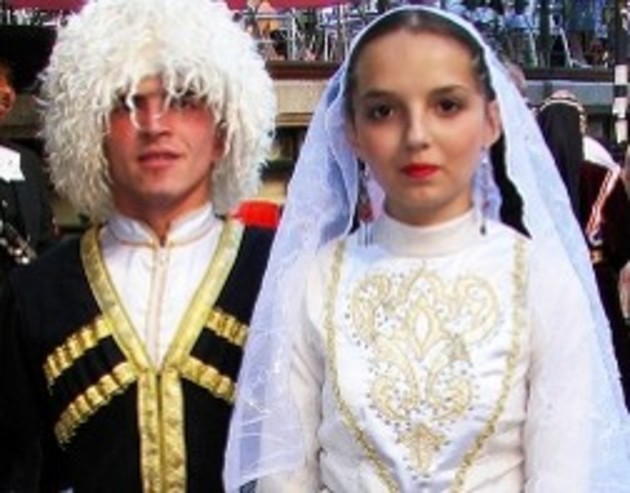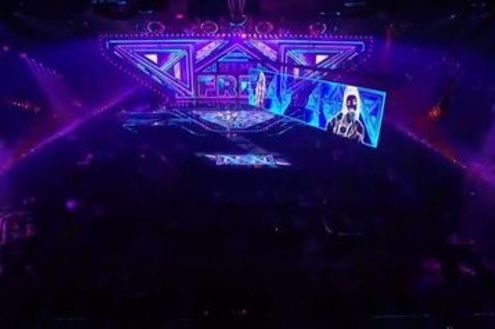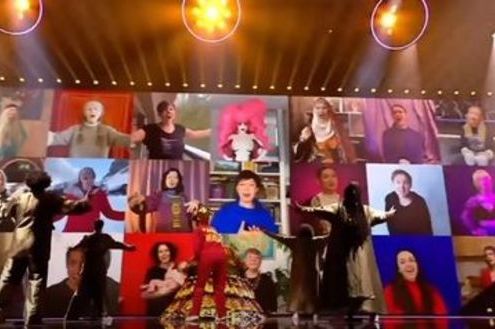Lezghins and Azeris are brothers forever By "Vestnik Kavkaza" For several years already Russia has been organizing the celebration of the 2000th anniversary of Derbent. The city is interesting not only because of its long and eventful history, but also because of its unprecedented multi-ethnicity. It was passed from one invader to another multiple times and each time a new emir of Derbent brought his countrymen with him, whether they were Russians, Persians, Arabs or Turks, and every people erected their synagogues, churches and mosques there. The ethnic composition of Derbent was subject to change, one could hear different languages in its bazaars and streets, a special synthesizing culture was being born. Nowadays Derbent is populated by Lezghins, Tabasaran people, Rutul people, Tsakhur people, Dargin people, Lak and Tat peoples, Russians and Azeris, with the latter accounting for at least half of the population.Take Sabnova, a large Azerbaijani village which has almost merged with Derbent. During World War II more than fifty of its men were called to join the Red Army, many remained on the battlefield. Many of them were awarded awards and medals for military merit. A great number of scientists and athletes come from this village. For example, the most award-winning weightlifter of Dagestan, an International Master of Sports, an honored coach of Russia and Azerbaijan, a multiple champion of the Soviet Union, the world record holder Avset Avsetov, grew up in the village. The first woman to become the head of a large farmstead and the head of the village administration of the Sabnova village Khanum Gyulmagomedova, an MD, a professor, a colonel of Medical Services Nazim Shihverdiev, a doctor of psychology Suleiman Shihverdiev were also born in this village.The Padar village has always been known for its spring on the Kavkaz highway. Truck drivers have long ago been stopping here to get some water. The Turkic tribe of Padars lived here long before the Caucasian Albania. Diverse Padar tribes settled not only in Dagestan. People say that there are three villages with the same name in Azerbaijan. The Padar people keep their customs and traditions. For example, a woman carries a tray of baked bread on her head, and even though baking bread in tandoors has already become the past, many in the village still bake bread this way.Let's look at the Arablinskaya station. There are many villages like that in Dagestan and Azerbaijan. 2300 people live in Arablinka and almost all families are international. Interethnic marriages in these lands is almost a tradition. Whenever an Azerbaijani married a Lezgin or a Lezgin married an Azerbaijani, it never was a problem, since it had been like that for centuries. This is where perhaps the concept of a common homeland originated. Take Mamedkala. The name of the village is related to legendary figures in the history of the Caucasus - Feteli Khan and Tootie Beeke. It was named "Mamed" (in Dagestani - Magomed) in honor of a son of a Kuban Khan. Therefore, in historical chronicles the settlement is called "Mamed Khan Kala" (the fortress of Magomed Khan). 250 years ago people settled here. Azerbaijanis, the Tabasaran people, the Dargin people, the Lezghins and the Lak people live here altogether as a happy family. They say that here, at the crossroads of four roads, all the dreams of the local residents have been fulfilled, and their desires and aspirations have come true. There are a great number of interethnic families here as well. Just like in other villages of Dagestan, mixed marriages here are common. Let's look at the Dzhemikent village. Several years ago a wrestling room was opened here in the Heydar Aliyev school. The village was visited by a delegation consisting of the vice-president of the Wrestling Federation of Azerbaijan (WFA) Babak Babaev, vice president of WFA on Free Wrestling Magomed Aliomarov and WFA vice president of Greco-Roman wrestling Elchin Jafarov as well as some famous wrestlers. These are just several examples that suggest that there is no animosity between the Lezghins, the Talysh people and the Azeris, despite media attempts. A similar situation can be seen in Azerbaijan, where North Caucasian peoples live. With the collapse of the Soviet Union, the Azerbaijani authorities offered people to get Azerbaijani citizenship without losing the citizenship of Russia. Russian citizens living in the village of Uryan-Uba accepted the offer. The dispute was settled in September 2010, when an agreement between Russia and Azerbaijan on the state border was signed.But Lezghins considered Azerbaijan their homeland even before that. There are rumors that Azerbaijani Lezghins refused to serve in the army because they were sent to Karabakh by force. However, there are quite a few Lezghins in the chain of command of the Azerbaijani Defense Ministry. Sahib Shirinov, a volunteer in the Azerbaijani Army, was one of the soldiers of the intelligence unit. He graduated from the Institute of Foreign Languages and worked as a rural teacher, but when the war in Karabakh broke out he joined the self-defense forces of the Khojavend region. "On the battlefield not the nationality, but the masculinity, courage are being evaluated," he says. "It is the war of all the peoples of Azerbaijan. Talysh people, Georgians and Russians fought beside me. Moreover, we were all volunteers. When there is a war, there can't be a situation that only citizens of one nation are fighting... I do not know of a single Lezgin who did not bring glory to his country, Azerbaijan... Lezghins are so much respected in Azerbaijan that anyone can envy them. Every centimeter of this country is dear to us. The Karabakh war has once again proven the courage of Lezghins. Courage is not only bravery, but also loyalty, love for the fatherland and intolerance of betrayal."
By "Vestnik Kavkaza"
For several years already Russia has been organizing the celebration of the 2000th anniversary of Derbent. The city is interesting not only because of its long and eventful history, but also because of its unprecedented multi-ethnicity. It was passed from one invader to another multiple times and each time a new emir of Derbent brought his countrymen with him, whether they were Russians, Persians, Arabs or Turks, and every people erected their synagogues, churches and mosques there. The ethnic composition of Derbent was subject to change, one could hear different languages in its bazaars and streets, a special synthesizing culture was being born. Nowadays Derbent is populated by Lezghins, Tabasaran people, Rutul people, Tsakhur people, Dargin people, Lak and Tat peoples, Russians and Azeris, with the latter accounting for at least half of the population.Take Sabnova, a large Azerbaijani village which has almost merged with Derbent. During World War II more than fifty of its men were called to join the Red Army, many remained on the battlefield. Many of them were awarded awards and medals for military merit. A great number of scientists and athletes come from this village. For example, the most award-winning weightlifter of Dagestan, an International Master of Sports, an honored coach of Russia and Azerbaijan, a multiple champion of the Soviet Union, the world record holder Avset Avsetov, grew up in the village. The first woman to become the head of a large farmstead and the head of the village administration of the Sabnova village Khanum Gyulmagomedova, an MD, a professor, a colonel of Medical Services Nazim Shihverdiev, a doctor of psychology Suleiman Shihverdiev were also born in this village.
The Padar village has always been known for its spring on the Kavkaz highway. Truck drivers have long ago been stopping here to get some water. The Turkic tribe of Padars lived here long before the Caucasian Albania. Diverse Padar tribes settled not only in Dagestan. People say that there are three villages with the same name in Azerbaijan. The Padar people keep their customs and traditions. For example, a woman carries a tray of baked bread on her head, and even though baking bread in tandoors has already become the past, many in the village still bake bread this way.
Let's look at the Arablinskaya station. There are many villages like that in Dagestan and Azerbaijan. 2300 people live in Arablinka and almost all families are international. Interethnic marriages in these lands is almost a tradition. Whenever an Azerbaijani married a Lezgin or a Lezgin married an Azerbaijani, it never was a problem, since it had been like that for centuries. This is where perhaps the concept of a common homeland originated.
Take Mamedkala. The name of the village is related to legendary figures in the history of the Caucasus - Feteli Khan and Tootie Beeke. It was named "Mamed" (in Dagestani - Magomed) in honor of a son of a Kuban Khan. Therefore, in historical chronicles the settlement is called "Mamed Khan Kala" (the fortress of Magomed Khan). 250 years ago people settled here. Azerbaijanis, the Tabasaran people, the Dargin people, the Lezghins and the Lak people live here altogether as a happy family. They say that here, at the crossroads of four roads, all the dreams of the local residents have been fulfilled, and their desires and aspirations have come true. There are a great number of interethnic families here as well. Just like in other villages of Dagestan, mixed marriages here are common.
Let's look at the Dzhemikent village. Several years ago a wrestling room was opened here in the Heydar Aliyev school. The village was visited by a delegation consisting of the vice-president of the Wrestling Federation of Azerbaijan (WFA) Babak Babaev, vice president of WFA on Free Wrestling Magomed Aliomarov and WFA vice president of Greco-Roman wrestling Elchin Jafarov as well as some famous wrestlers. These are just several examples that suggest that there is no animosity between the Lezghins, the Talysh people and the Azeris, despite media attempts. A similar situation can be seen in Azerbaijan, where North Caucasian peoples live. With the collapse of the Soviet Union, the Azerbaijani authorities offered people to get Azerbaijani citizenship without losing the citizenship of Russia. Russian citizens living in the village of Uryan-Uba accepted the offer. The dispute was settled in September 2010, when an agreement between Russia and Azerbaijan on the state border was signed.But Lezghins considered Azerbaijan their homeland even before that. There are rumors that Azerbaijani Lezghins refused to serve in the army because they were sent to Karabakh by force. However, there are quite a few Lezghins in the chain of command of the Azerbaijani Defense Ministry. Sahib Shirinov, a volunteer in the Azerbaijani Army, was one of the soldiers of the intelligence unit. He graduated from the Institute of Foreign Languages and worked as a rural teacher, but when the war in Karabakh broke out he joined the self-defense forces of the Khojavend region. "On the battlefield not the nationality, but the masculinity, courage are being evaluated," he says. "It is the war of all the peoples of Azerbaijan. Talysh people, Georgians and Russians fought beside me. Moreover, we were all volunteers. When there is a war, there can't be a situation that only citizens of one nation are fighting... I do not know of a single Lezgin who did not bring glory to his country, Azerbaijan... Lezghins are so much respected in Azerbaijan that anyone can envy them. Every centimeter of this country is dear to us. The Karabakh war has once again proven the courage of Lezghins. Courage is not only bravery, but also loyalty, love for the fatherland and intolerance of betrayal."
According to Shirinov, Major Askerov, an officer of the former Soviet Army, was the commander of his military unit, he is a Lezghian too. Azerbaijan remembers the feats of two Heroes of Azerbaijan, Lezghians by nationality, Fakhraddin Musayev and Sergey Murtazaliyev who, in fact, founded fighting aircraft in the country. Until recently, the defense department of Azerbaijan was also headed by a Lezghian – Safar Abiyev.
After the collapse of the USSR in Azerbaijan, studying in the Lezghin language was restored. By 2010 there were already 126 schools with studying in the Lezghin language. To train teachers for these schools a branch of the Baku Pedagogical College was opened in the Hussar district. Work on the development of the Lezghin language and culture since the middle of the 1990s has been coordinated by the Lezghin national center "Samur". The Lezghin Suvar ensemble carries the rank of "National Collective of Azerbaijan". Since 1998 the State Lezghin Drama Theater works in Kusary. The newspapers "Samur", "Kusar", "Eni Samukh" and the magazine "Chirag" are printed in the Lezghin language. Lezghin culture is advanced in masses by the composer Elza Ibragimova, the doctor of arts Nureddin Gabibov, writer and poetess Sadagat Kerimova, poetess Gulbes Aslakhanova. For a long time Lydia Khudat kyzy Rasulova held the post of Minister of Education.
Cultural ties between Azerbaijan and the North Caucasian republics of the Russian Federation are supported by economic ones. Now trade between Dagestan and Azerbaijan is 231 million, and the share of Dagestan doesn't exceed 21 million, so prospects are big. Delegations of Azerbaijani businessmen are frequent guests in the North Caucasus. And between Grozny and Baku direct flights are carried out by planes from the Vaynakh-Avia company. Dagestan, Chechnya and Ingushetia use the experience of Azerbaijan in the agriculture and tourism spheres. "In the old part of Baku there are many monuments of ancient architecture and they have careful relations", the head of Ingushetia Yunus-bek Yevkurov says. "We have the idea of finding a chance to restore the old fortress in the village of Gamurziyevo, to discuss with designers questions of reconstruction old and construction of new small streets, monuments and parks in each city of Ingushetia. They can become historical sites and characteristic of these settlements".
The heads of the North Caucasian republics maintain close personal relations with President of Azerbaijan Ilham Aliyev, and Ramazan Abdulatipov in an interview to "Vestnik Kavkaza" called Heydar Aliyev a political teacher, but it is obvious that the strongest mutually-beneficial international relations develop when they are built "from the top" and "from below" at the same time, when the public, humanitarian, peacekeeping organizations and movements of Russia and Azerbaijan are involved in them. The society "Dagestan-Azerbaijan" in December 2000 urged the Russian-Azerbaijani frontier to be declared a zone of world, political and social stability and economic prosperity, in the hope that the belt of the world and tranquillity becomes a bridge for assistance to geopolitical processes in the Caucasus.






